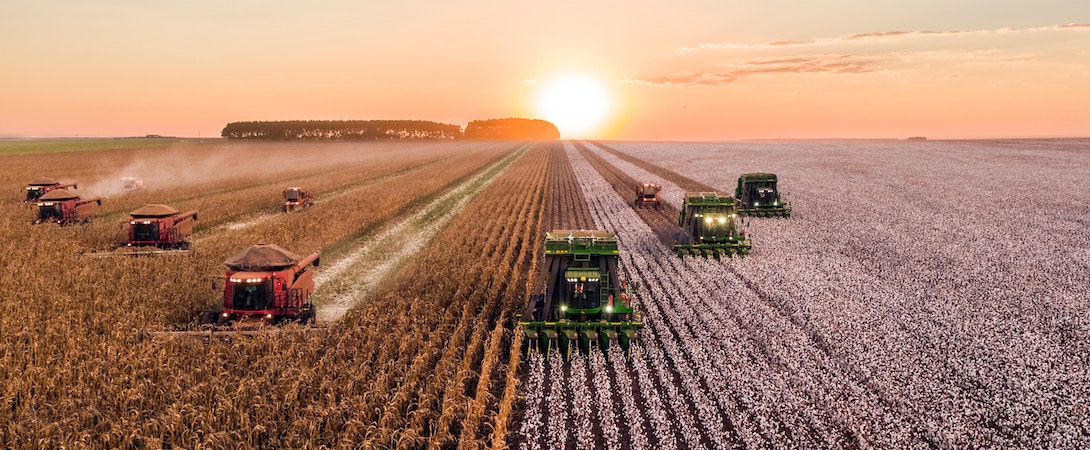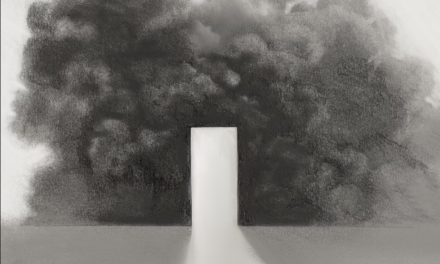Written by Christine Lycklama / Faunalytics
We can feed the ever-growing human population through sustainable farming and less food waste, but not without a shift towards a plant-based future.
We all need to eat. Unfortunately, to produce the food we collectively consume there is a need for a lot of space and resources, which has severe consequences for the planet. It is becoming very clear that animal farming does the most damage to the environment: The billions of animals farmed for human consumption need to be fed enormous amounts of grass, corn, and grains, and as a result, 30% of the land surface of our planet is used for croplands and pastures.
Usually, climate change discussions revolve around fossil fuel consumption. Yet little attention is paid to animal farming. This has to change, as 11.6% of greenhouse gases worldwide come from farmed animal digestion processes. The negative effects of animal farming do not stop there: 8% of human water consumption is used for farm animals, and of the Amazon that is cut down, 70% is to make space to feed farm animals. Clearly, something must change.
On top of the damage animal agriculture already does, the human population is expected to hit 9 billion by 2050. Even with veg*n diets trending upward, meat and dairy consumption is likely to increase in developing countries. This is also where the fastest population growth will take place. So how will we feed everyone without further damaging the planet?
Producers
There is quite a lot of disagreement on how to increase food production sustainably. On the land-sparing side, people argue that we need to intensify farming. If we can increase the amount of food produced on the already-existing farmlands, we can avoid turning more natural habitats into pasture and cropland. However, this generates other environmental issues. Firstly, industrial farming leads to the destruction of the soil. This type of farming also uses fertilizers and pesticides. Finally, very few species of animals and plants can live in such areas resulting in reduced biodiversity.
Supporters of the land-sharing idea claim that we should use less land for conservation. Instead, we must use more land to produce more food, but in a less industrial way. By having multiple types of crops, together with less use of chemicals, biodiversity can remain higher. Unfortunately, many farmers are resistant to adopting less industrial farming processes, for various reasons. Generally, their goal is to produce as much as possible, quickly and cheaply. But they ignore the fact that if they continue destroying the environment, at one point the soil will not produce any more food.
Land-sparing farms produce a lot of food (high yield) so that there is more space for nature reserves. Land-sharing farms are less industrial, but on a bigger area, to preserve biodiversity.
Further down the production line, there is also a lot of room for improvement. Around the globe, a third of all food produced is thrown away. The good news is that we can reduce this waste by 50-75%. Food waste is highest for fresh animal products, because they are prone to spoilage. Additionally, fair redistribution of food is critical. Some areas of the globe have too much food resulting in illness, while other parts of the world have too little to eat. Plus, a distinction must be made between what foods we produce more of. For example, the supply of red meat is a whopping 568% higher than required. At the same time, not enough vegetables, nuts, fruits and seeds are produced to meet world demands.
Consumers
Until now, I’ve only discussed what can be done at the producer level. But there is a limit on how much producers can do to reduce the impact they have on the environment. An incredibly comprehensive study published in 2018 analyzes the extent to which environmental effects can be reduced at the farm level. They took into account that impacts can vary 50 fold between the 570 million farms worldwide. The conclusion was that, to reduce impacts, we must focus on different areas of different producers, and therefore adopt different practices. The solutions will have to be regional and sector-specific. There is no global solution for all farms, and it will take a lot of time and research to create significant changes.
So what can we as consumers do so that we can have a sustainable food system in the future? The study once again clearly shows the far-reaching effects of animal farming. Even though animal products require 87% of the land used for farming, they only contribute to 37% of the human protein intake, and only 18% of the calories consumed by humans worldwide. The study finds that the lowest impact animal products still exceed vegetable proteins in polluting the atmosphere, soil, and water. We as consumers must, therefore, move towards a diet that excludes all animal products, and we also have to pay attention to where we get our food from, as some producers have a much higher impact on the environment than others. For example, avoiding production with the highest land use reduces the land use of those products by 39% on average. Effective communication of the importance of a dietary shift will also be essential.
It all sounds rather intimidating, but the good news is that we can do something today, that will have a huge impact tomorrow. We don’t need to wait for governments, politics, and laws to reallocate the half a trillion dollars in agricultural subsidies globally. It is as simple as choosing plant-based options at every meal. If we do so we have the potential of reducing land use by 76%, greenhouse gas emissions by 49%, and freshwater use by 19%. In the U.S, meat consumption is three times the global average. Here, the potential for reducing emissions is up to 73%.
The fact that consumers can make such a big difference should be very empowering, and something advocates should highlight whenever possible. Farmers will only produce what we as consumers demand. So next to avoiding the unnecessary slaughter of billions of animals (which in itself is a good enough reason), going for plant-based options will allow for sustainable food production now and in the future.
has recently completed her Master’s degree in ecology in The Netherlands, and is now beginning a freelance career in science writing. In her free time, she volunteers with local animal advocacy organizations and spends time with family, friends, and Mika, the dog!















